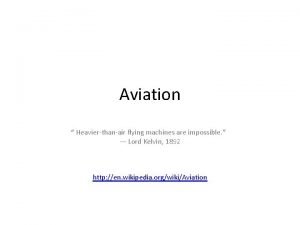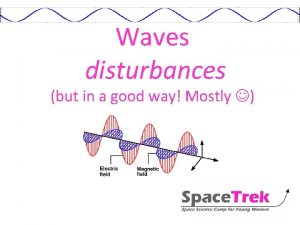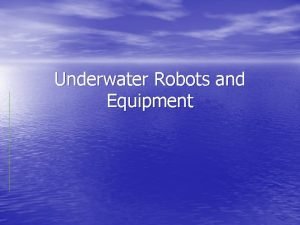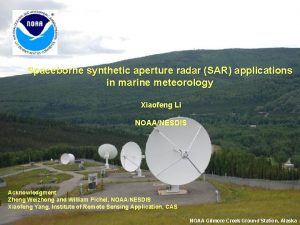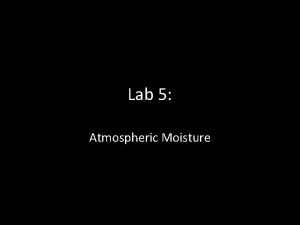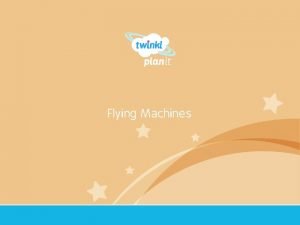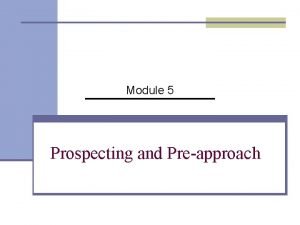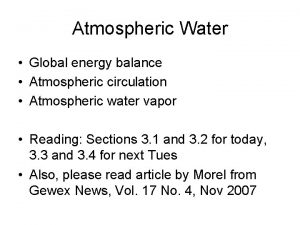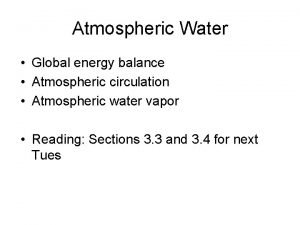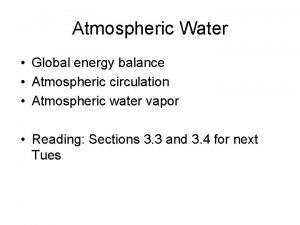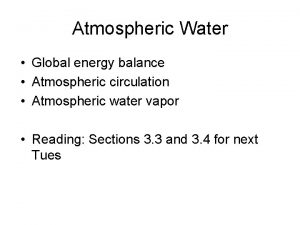Prospecting for atmospheric energy for autonomous flying machines



























- Slides: 27

Prospecting for atmospheric energy for autonomous flying machines G. D. Emmitt and C. O'Handley Simpson Weather Associates Lidar Working Group Meeting Snowmass July 17 – 20 2007

Acknowledgements • DARPA funding • Dr. James Hubbard, National Institute of Aerospace (PI for Sky. Walker) • Navy’s Center for Interdisciplinary Remotely Piloted Aircraft Studies (Twin Otter aircraft and Doppler wind lidar)

Objectives • Fly airborne DWL to explore the feasibility of using Doppler lidar to autonomously prospect for vertical motions and shear within reasonable proximity of an unpiloted aircraft (below 3 km) • Develop a set of Atmospheric Energy Prospecting Algorithms (AEPAs) • Develop DWL instrument specifications for future UAVs. “Whisker” class DWLs could sense nearby vertical air motions that would enhance probability of intercepts and thus increase mission duration

Strategy • Conduct airborne experiments using the Navy’s Twin Otter Doppler Wind Lidar (TODWL) system to collect data to: – Identify the DWL detectable signatures of vertical structures (thermals and atmospheric waves) and horizontal wind shear observed ahead of the aircraft at or near flight level; – Determine the vertical extent of vertical motion structures that can be reached from the current aircraft position; – Rank multiple coincident vertical motion structures based upon risk/benefit metrics.

The TODWL system A CIRPAS instrument (Twin Otter Doppler Wind Lidar)

Background • TODWL has been operated (since 2002) by CIRPAS (Center for Interdisciplinary Remotely Piloted Aircraft Studies), a part of the Naval Postgraduate School, Monterey, CA. Emmitt is the TODWL PI. • Used by NOAA for investigating lidar performance over the ocean in planning for a future space-based DWL • Used by USArmy for studies of UAV wind profiling in complex terrain and urban areas. • Used by Navy to conduct MBL research; recently added the Smart Towed Platform

The instrument • • 2µm coherent detection (CTI MAG 1 A) 2 m. J ; 500 Hz 10 cm two axis scanner, side door mounted GUI with realtime instrument control and data display • Range: . 3 – 21 km depending upon aerosols • Accuracy: <. 10 m/s in three components • Weight: 700 lb Power: 700 W

Particle probes STV TODWL scanner Surface Temperature Sensor

Targets for AEPAs • Thermal like – Thermals (flat land slope) – OLEs – Cloud updrafts • Obstacle flows – Orographic upslope currents • Gravity waves – Mountain waves • Lower tropospheric jets – Shear in general

Prospecting Flights October ‘ 06 & April ’ 07 Monterey, CA • 20 hours of flight time • Explored several strategies for scanning lidar (raster, step stare, forward conical) • Flights targeted ground rooted thermals, Organized Large Eddies (OLEs), orographic waves, low level jets and cloud updrafts

Prospecting for OLEs TODWL

~1500 m ~400 m



Salinas Valley 500 feet over Salinas Valley floor Monterey Mountains Over Salinas Airport

Inputs to Flight Planning Cap on thermals

Flight over valley: 150 m (~500’) FL • Purpose was to look ahead of the aircraft for convergence zones that may portend coherent vertical motions and shear layers useful for “dynamic soaring”. • Scanning strategy was to scan beam on a plane oriented ~ 5 degrees below the flight level; scanning was to right side of the aircraft and subtended ~ 10 degrees.

High aspect ratio vertical features Ground intercept Not so well organized or persistent features

4 m/s Example of forward sweeping scan of velocity and backscatter Vertical velocity of aircraft measured by INS on Twin Otter Aerosol loading appears greatest in upward moving features XZ slice w/ x being along track Expect (ideally) that upward motion would occur near switch from positive to negative velocity deviations



WIND SPEED (M/S) 0 4 8 12 16 20 24 28 32 36 2000 HEIGHT (M) 1600 WIND PROFILES, APRIL 17 2007 BLACK: WIND DIRECTION RED: WIND SPEED SOLID: AFTERNOON FLT DASHED: EVENING FLT 1200 800 400 Salinas Valley (205 m) 0 0 90 180 WIND DIRECTION (DEG) 270 360

Dynamic Soaring For the albatross, the minimum V(10 m) = 8. 9 m/s From Gottfried Sachs (2005)

Salinas Valley Centerline

Mountain Waves? 1944 PDT 17 April 2007 near King City, CA

Atmospheric Energy Prospecting T, RH & Wind soundings In-flight DWL Prospecting Scans Diagnostic & Predictive Models Likelihood of significant and useable atmospheric dynamics Feature Identification Opportunity Ranking (Push-broom & Adaptive) Target Selection Platform Navigation Update Pre-flight activities In- flight activities AIFC Target Rapid Update Platform Adaptive Configuration

Summary • The continuous or random raster scans are the best options for the detection and characterization of vertical velocity features • The vertical velocities inferred from the LOS convergence/divergence observations appear to be reasonable and useful • The correlation of aerosol loading and vertical motion may be useful. However, the interpretation of this relationship requires further study. • Airborne prospecting for clear air vertical motion features appears very feasible and may easily be extended to clouds, waves and shear situations. • In November, TODWL flights will focus on nocturnal atmospheric advantages: gravity waves, low level jets (dynamic soaring) and cloud updrafts.
 Lord kelvin flying machines
Lord kelvin flying machines Tsm prospecting
Tsm prospecting Prospecting
Prospecting Social prospecting pro
Social prospecting pro Using bird dogs when prospecting for clients refers to
Using bird dogs when prospecting for clients refers to Strategic prospecting process
Strategic prospecting process Strategic prospecting
Strategic prospecting Eco prospecting
Eco prospecting Prospecting in aviation
Prospecting in aviation Sales prospecting playbook
Sales prospecting playbook Pre approach definition
Pre approach definition Mineral prospecting expert system
Mineral prospecting expert system Venkata chinnaya vs venkata maya
Venkata chinnaya vs venkata maya Energy energy transfer and general energy analysis
Energy energy transfer and general energy analysis Energy energy transfer and general energy analysis
Energy energy transfer and general energy analysis Differentiate between simple machine and compound machine
Differentiate between simple machine and compound machine Chapter 10 energy, work and simple machines answer key
Chapter 10 energy, work and simple machines answer key Energy work and simple machines chapter 10 answers
Energy work and simple machines chapter 10 answers Section 2 describing energy
Section 2 describing energy Section 4 review physical science
Section 4 review physical science Work power energy and machines
Work power energy and machines Chapter 10 energy work and simple machines answer key
Chapter 10 energy work and simple machines answer key Atmospheric opacity
Atmospheric opacity Landscape atmospheric perspective
Landscape atmospheric perspective Atmospheric suits
Atmospheric suits Atmospheric gravity waves
Atmospheric gravity waves Penn state meteorology
Penn state meteorology Lab 5 atmospheric moisture
Lab 5 atmospheric moisture
